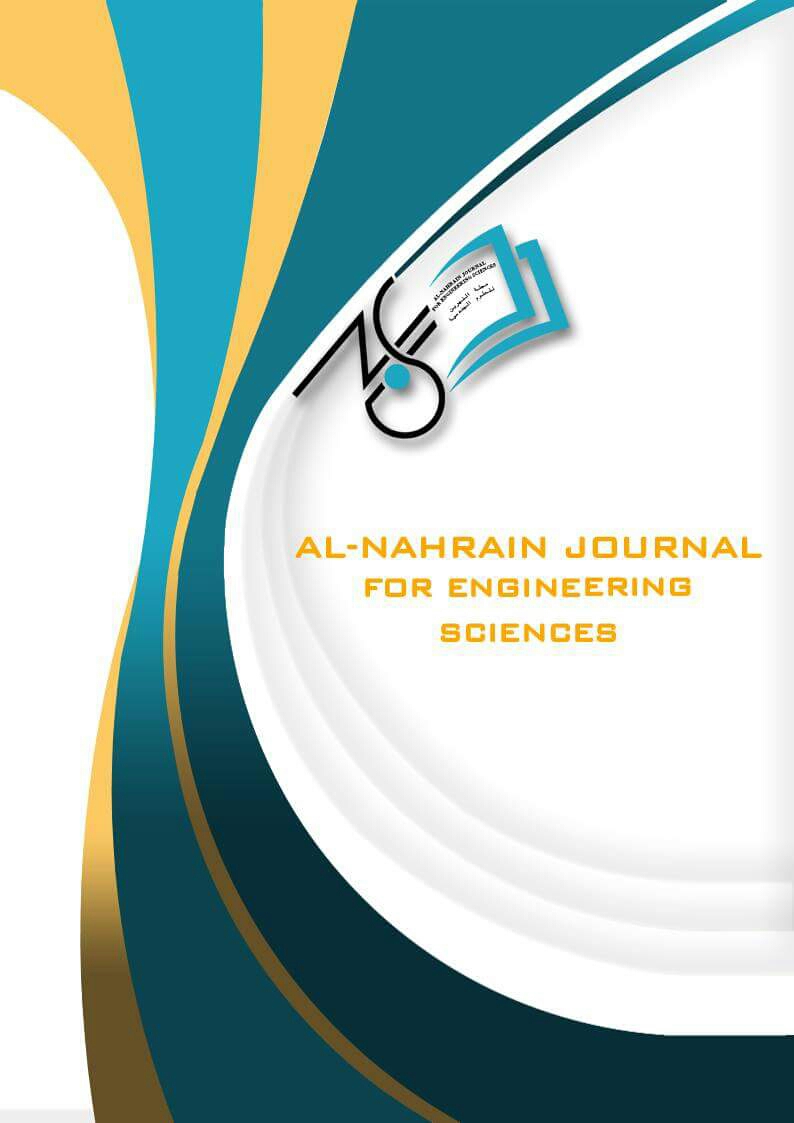Abstract
Construction joints are separations between successive concrete pours. They are critical in the building of large concrete structures, since these structures cannot be cast in a single pour. Self-consolidation concrete is a relatively new kind of concrete that is considered suitable for a wide range of construction applications, especially those needing a high early resistance. Certain findings from earlier experimental tests were adopted and analyzed using finite element analysis. ANSYS program was used to analyze the impact of utilizing high strength concrete (fc') and the secondary reinforcement ratio (ρv) on the behavior of reinforced self-consolidating concrete beams having a horizontal construction joint. Nine beams analyzed in this study have the same dimensions (150×180×1200) mm (width× height ×length). Between the two supports, the clear span was 1100 mm. Two-point loads were applied to the simply supported beams during testing. One of the beams acts as a control beam (without a construction joint) and the remaining beams were with horizontal construction joint in the tension zone. The ultimate loads obtained analytically vary by between 3.1% and 7.8 % from those found experimentally. The presence of the horizontal construction joints made the beam less stiff. Utilizing a 70 MPa high strength concrete resulted in a 47.4 % in ultimate load over the experimental value for regular strength concrete (28 MPa). Increasing the ratio of secondary reinforcement (0.01229 to 0.049) resulted in a 10.3% increase in ultimate load magnitude, while decreasing the ratio of secondary reinforcement (0.01229 to 0.0025) with spanning the spacing between stirrups led to a reduction in ultimate load magnitude by 55.8%.
Keywords
Ansys
Construction Joints
Finite Element.
Self-Consolidating Concrete
Abstract
الفواصل الانشائية : هي فواصل بين صب الخرسانة المتتالية وتعتبر ضرورية في بناء الهياكل الخرسانية الكبيرة ، حيث لا يمكن صب هذه الهياكل في مرة واحدة. ان الخرسانة ذاتية الرص هي نوع جديد نسبيًا من الخرسانة التي تعتبر مناسبة لمجموعة واسعة من تطبيقات البناء ، خاصة تلك التي تحتاج إلى مقاومة عالية في وقت مبكر. تم اعتماد وتحليل نتائج معينة من الاختبارات التجريبية السابقة باستعمال تحليل العناصر المحدده(finite element analysis) حيث تم استعمال برنامج ANSYS لتحليل تأثير استخدام خرسانة ذات مقاومة انضغاط عالية(fc') ونسب متغيرة من كمية حديد التسليح الثانوي (ρv) على سلوك العتبات الخرسانية المسلحة ذاتية الرص التي لها فاصل إنشائي أفقي. تسع عتبات تم تحليلها في هذه الدراسة لها نفس الأبعاد (150 × 180 × 1200) مم (العرض × الارتفاع × الطول) و كان طول الفضاء الصافي بين المساند 1100 ملم وتم تسليط ألاحمال على النماذج بتحديد نقطتين عللى هذه العتبات أثناء الاختبار. ان العتبة الاولى كانت بدون مفصل بناء و العتبات المتبقية كانت مع مفصل بناء أفقي في منطقة الشد. حيث تختلف الأحمال النهائية التي تم الحصول عليها تحليليًا بنسبة تتراوح بين 3.1٪ و 7.8٪ عن تلك التي تم العثور عليها تجريبيًا. و ان وجود فواصل انشائية افقية في العتبة ادى الى تصرفها بمتانة اقل. أدى استعمال خرسانة ذات قوة انضغاط عالية (70) ميجا باسكال إلى زدياة في الحمل الاقصى بمقدار 47.4٪ نسبة لقيمة الحمل الاقصى للخرسانة العادية (28 ميجا باسكال) المستخدمه في التجربة. وايضا عند زيادة نسب التسليح الثانوي من (0.01229 الى 0.049) تم الحصول على زيادة قدرها 10.3٪ في مقدار الحمل الاقصىي ، بينما أدى تقليل نسبة التسليح الثانوي من (0.01229 الى 0.0025) مع زيادة المسافة بين التسليح الشاقولي (stirrups) إلى تقليل مقدار الحمل الاقصى بنسبة 55.8٪.
Keywords
Ansys
الخرسانة ذاتية الرص
المفاصل الانشائية
طريقة العناصر المحددة
